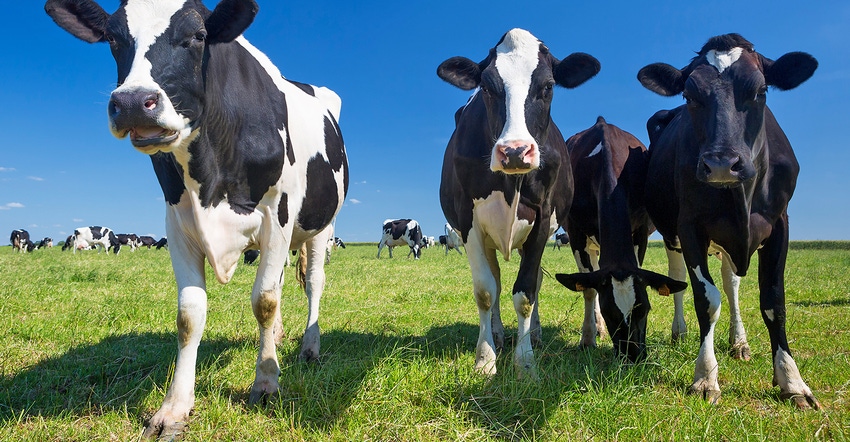May 23, 2018

By Heather Schlesser
People intimately involved in the dairy industry are well aware that the summer heat brings many advantages for the crops and many disadvantages for the milking herd.
Farmers often refer to the “summer slump,” which represents the slowdown in lactation that animals frequently experience when the weather gets hot. During this period, an increase in somatic cell counts is often seen as well. There is no single factor that leads to this increase in higher somatic cell counts; rather, there are a few factors. When you consider summertime conditions in Wisconsin, you realize that with the heat comes humidity.
The humidity in the air affects how quickly things dry out. This matters because it is likely that alleys in a freestall barn will not dry out in the summer, which leads to wet, manure-laden hooves coming in contact with teat ends when animals lie down to rest. It is also not uncommon for farms to use sprinkler systems in the barn to help keep animals cool in the oppressive heat of summer. Unfortunately, these sprinklers add to the moisture level in the barn — and to the likelihood of bacteria encountering teat ends.
Alleys are not the only areas to experience excess moisture during summer months. The bedding in freestalls will have increased moisture due to summer humidity, too. This extra moisture makes bedding material a ripe environment for bacteria multiplication.
Heat stress can also lower an animal’s immune system, making her more susceptible to environmental mastitis pathogens.
Preventing a summer slump
While it may seem impossible to keep somatic cell counts low during the summer, it is not. Here are a few tips and tricks to help you along the way:
1. Alley and stall maintenance are important year-round. It is important to keep accumulated manure to a minimum. This will help keep manure off cows’ feet and away from udders.
2. Replenish stall bedding on a regular basis to help keep it clean and fresh.
3. If you have curtains or doors, open them to encourage air movement through the barn. The air movement will not only aid in cooling the cows, but also in drying out the barn.
4. If it is possible, let animals out on a dirt or grass lot; this will help reduce manure in the barn and allow them to have time on dry surfaces. While the animals are out of the barn, alleys may have a chance to dry.
5. Proper equipment maintenance is necessary year-round. It is also important to make sure the milking routine is carried out as prescribed, and thorough post-dip is applied. Make sure extra steps are taken to prevent the spread of mastitis in the milking parlor.
6. Do not cause cows to run when moving them to the parlor or back to their stalls. Running cows can kick up manure or slip and fall, causing manure to come in contact with teat ends. Move cows around the barn and parlor slowly. Fast-moving cows kick up more manure onto their feet and legs. Cows moved calmly are also more likely to enter the parlor smoothly. This will help them enter the milk letdown phase of the milking process.
Schlesser is the Extension dairy agent in Marathon County, Wis. This column is provided by the University of Wisconsin Extension Dairy Team.
You May Also Like




